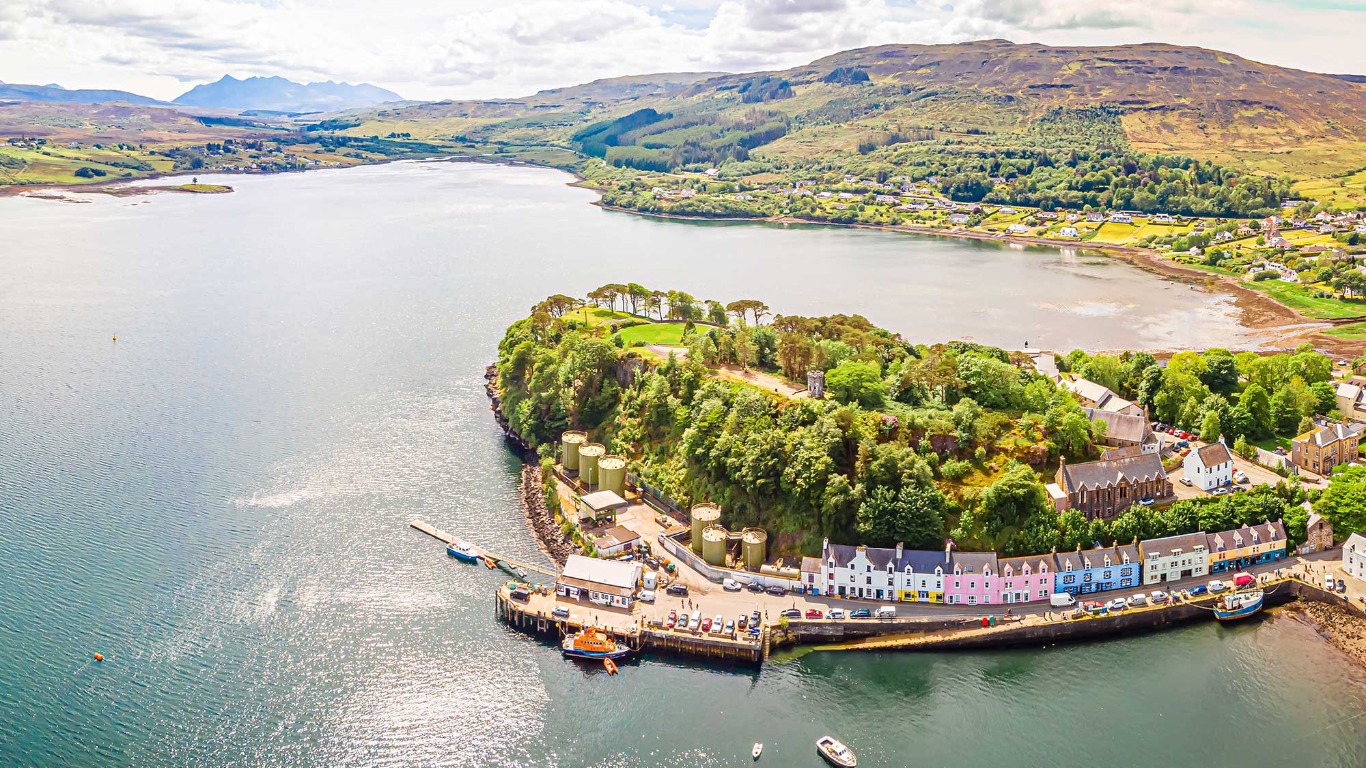What to see on the Isle of Skye, Scotland
Skye is Scotland’s most visited island for a reason – and not just because of the bridge linking it to the mainland. This is the largest and most dramatic of the Inner Hebrides, all dark toothy peaks and improbable volcanic scenery, and it has some of the country’s very best seafood – and whisky – to boot. Don’t rush your visit, the island is far larger than you might imagine and there’s enough to see here to fill a week or more. These are the highlights.
For the landscape
Scotland’s west coast thrills the eye with some truly peerless scenery and Skye is the crowning jewel, the toothy ridge of the Cuillin standing in dark relief on the horizon as you make your approach.
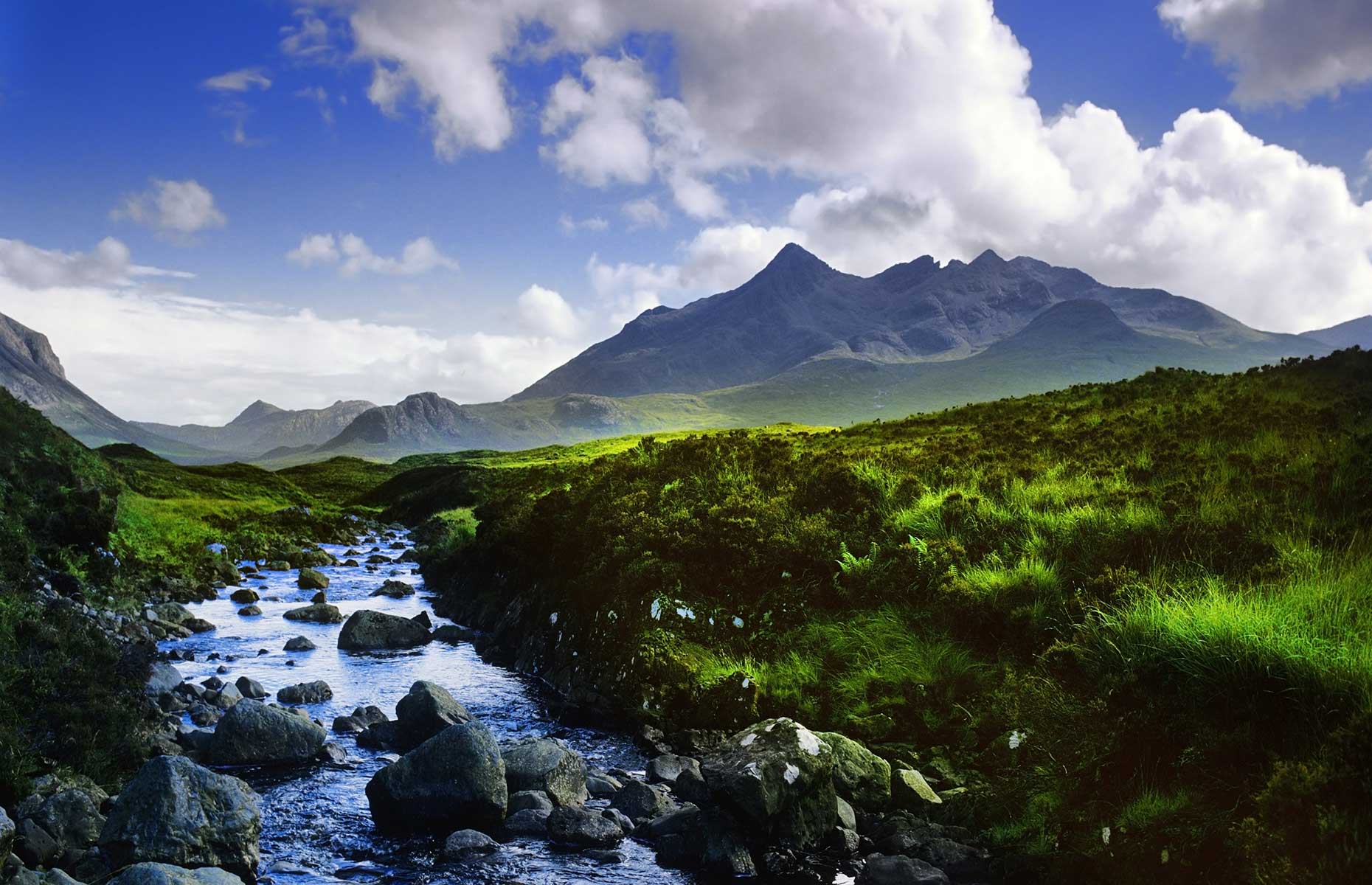 David Hughes/Shutterstock
David Hughes/Shutterstock
This forbidding mountain range stacks peak after peak of ebony basalt and gabbro along the skyline, merging with the mist and cloud until it seems all light has been blotted out. On dark days the ridge has an almost oppressive magnetism, and when the sun comes out there’s no view in Scotland more magical than the one from Elgol, a village that dares to face down the Cuillin’s teeth across the water.
READ MORE: Here's what else to see in Scotland during 2020
Even more dramatic is the Trotternish peninsula, a landscape formed by volcanic activity, dramatic landslides and millennia of erosion. The Old Man of Storr (pictured below) stands above it all, a finger of rock that stabs the sky like a dagger, while Fairy Glen offers the chance to spring across emerald grassland among a series of bizarre rock formations that look like something out of a Tolkien novel.
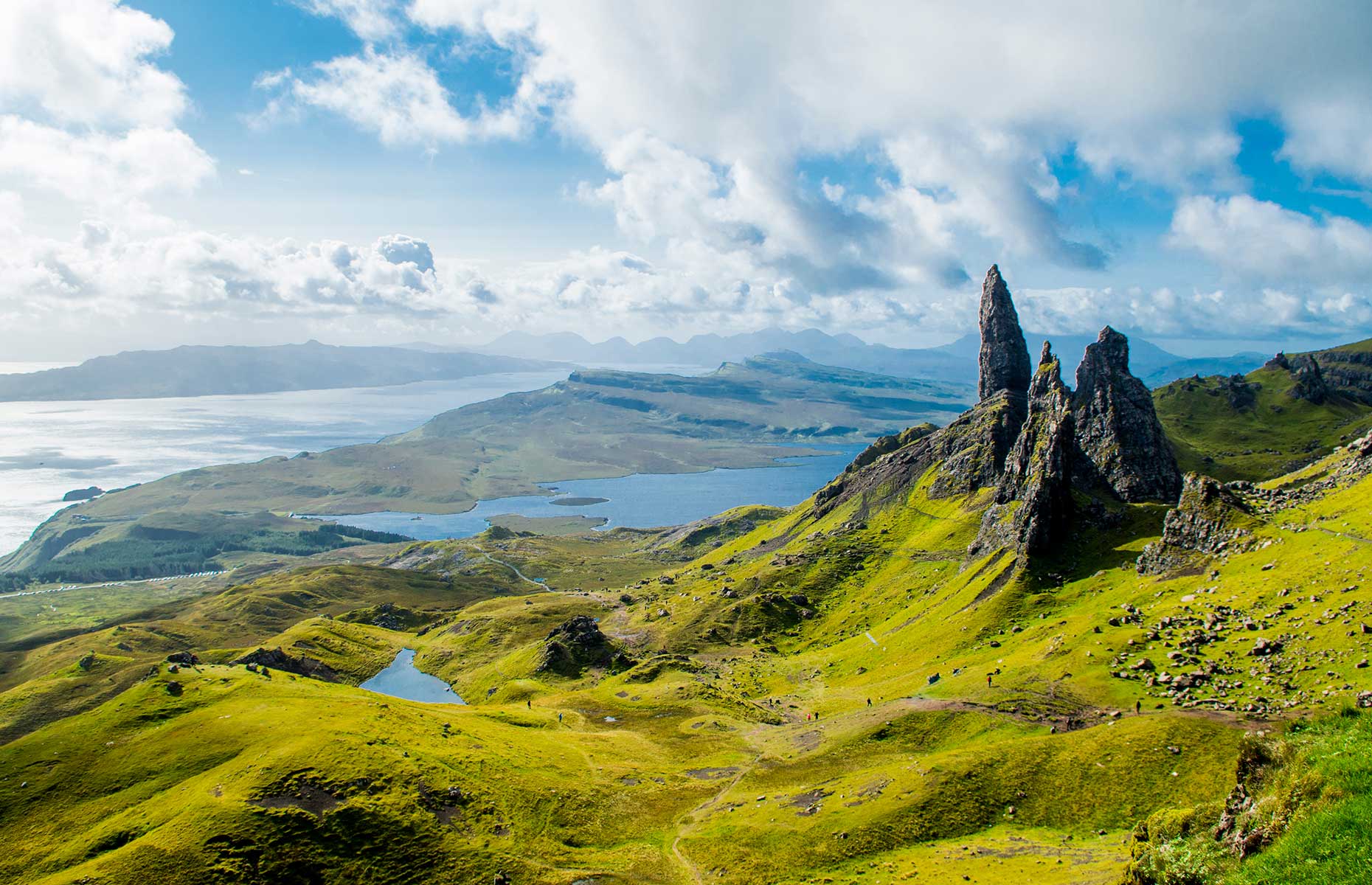 AdamCh/Shutterstock
AdamCh/Shutterstock
The highlight, though, is the Quiraing, a fantastical landscape to inspire tall tales and fairy stories. From the inland cliffs of its escarpment you’ll look down over an almost flat green expanse, slumped in the middle like a chocolate fondant, surrounded by a few hardy edges including a spindle of rock reminiscent of a witch’s finger.
For the wildlife
Deer and otters and sea eagles, oh my! Skye is a wildlife watchers paradise, from the waters that surround it, which harbour those otters as well as seals, dolphins and minke whales, to the sky above it, where white-tailed sea eagles, golden eagles and packs of puffins wheel.
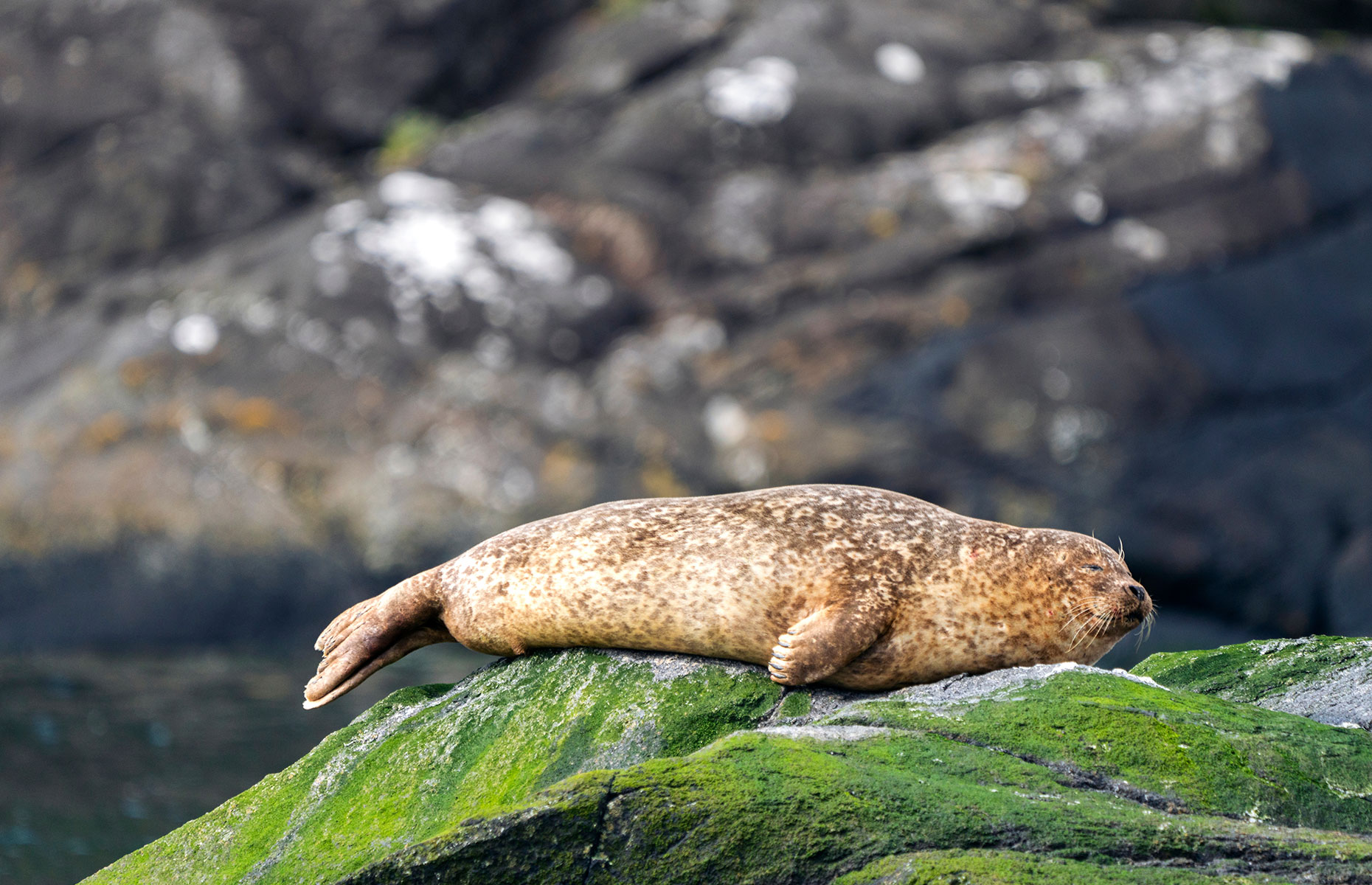 Revati and Charles Victor/Shutterstock
Revati and Charles Victor/Shutterstock
There are also deer, of course, seen up in the high ground during the summer but easier to spot in winter when they descend in search of better grazing and can often be seen in Glen Sligachan.
For the best chance of spotting all manner of wildlife head out on a “wild walk” with Skye Ghillie, aka Mitch Partridge. Mitch will take you far off the beaten track and teach you how to forage for wild snacks and build a fire to brew up some bog myrtle tea while he tells you about the island’s history, from the dinosaurs and Vikings to the Highland Clearances. If you really want to get to grips with Skye, this is the way to do it.
For the munros
If the straightforward strolls of Trotternish aren’t testing enough for you – and you have experience, the right gear and the weather on your side – then Skye’s munros are calling.
A munro is any Scottish peak over 3,000 feet (around 914m) and Skye is home to 12 of them, all clustered together in the Cuillin (though Blabheinn, pictured below, stands slightly apart).
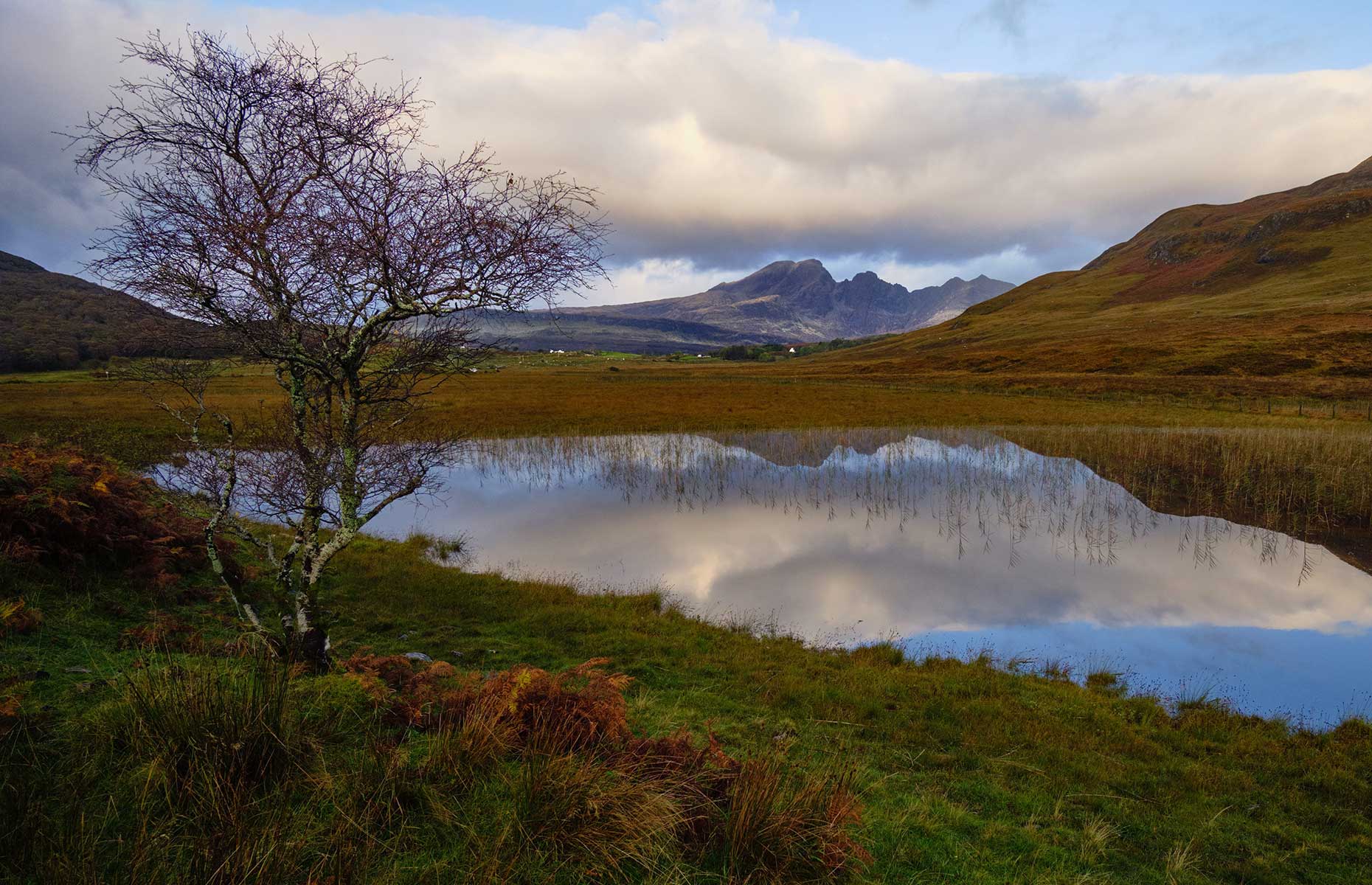 Ian Cylkowski/Unsplash
Ian Cylkowski/Unsplash
The easiest is probably Sgurr na Banachdich, which doesn’t involve a scramble to reach its 3,110-foot (948m) summit. It takes around six hours and your reward is a view across the mountains, the island and the Atlantic.
Taller and tougher is 3,200-foot (978m) high Sgurr Dearg, which is topped by the infamous Inaccessible Pinnacle, an 26-foot (8m) shark’s fin of slippery basalt that is Britain’s holy grail of climbing. You can walk up here in around seven hours return and if you skip the climb, you’ll only need to tackle some route finding and straightforward scrambling. At the top you can watch harnessed-up climbers taking on “In Pinn” but perhaps even better is the view outwards, to the Small Isles and across to the other peaks of the Cuillin.
For the whisky
Skye’s local firewater is world-renowned and no visit to the island is complete without dropping in to Talisker distillery for a wee dram. This is a classic Scottish whisky house, low-slung on the Lochside at Loch Harport, painted in brilliant white, with a slate grey roof and a slender silver chimney.
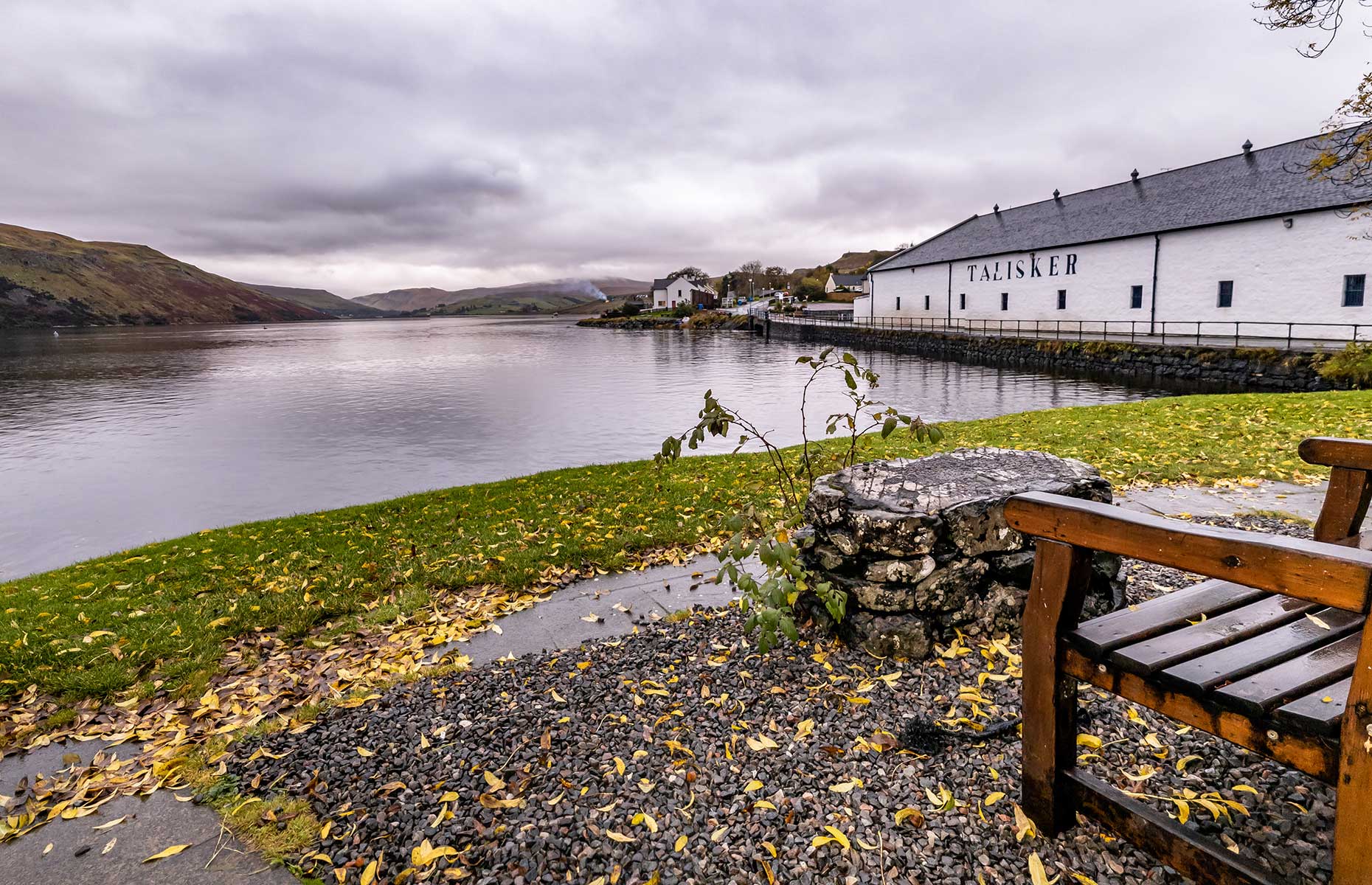 Lukassek/Shutterstock
Lukassek/Shutterstock
The tour involves all manner of information about malting and fermentation as you stroll around the stills and mash tuns. You’ll learn that Talisker’s fire comes from a longer S bend in the wash stills, giving the whisky more time in contact with the copper, and will finish up with a tasting of the classic Talisker 10, its smoke and black pepper setting your tastebuds a-tingle and sending you back out into the scenery with warmth in your belly.
READ MORE: Love whisky? The Isle of Islay is another brilliant option
For the seafood
All that water drops you an obvious clue – that Skye is a great place to feast on seafood.
Two local chefs named Calum are the leading lights. In Portree, Calum Munro’s harbourside Scorry Breac serves up the likes of hake and monkfish, landed just outside the window, while further west at Calum Montgomery’s restaurant with rooms, Edinbane Lodge, you can expect Skye-landed crab, mussels, squid and langoustines as well as foraged seaweeds.
For something simpler head to the Oyster Shed in Carbost where “oysterman” Paul McGlynn dishes out those oysters, as well as mussels, crab and steaming hot chips in takeaway containers to be enjoyed at picnic tables.
For the ferry journey
Sure, you could just pop over the bridge – and it’s a glorious drive above the Atlantic – but by far the most romantic way to reach Skye is on the Glenelg ferry.
The MV Glenachulish is the only remaining manually operated turntable ferry in the world and you’ll roll down the slipway onto her, bumping up across the thick metal gangplank onto a car deck turned at a 90-degree angle to the rest of the ferry.
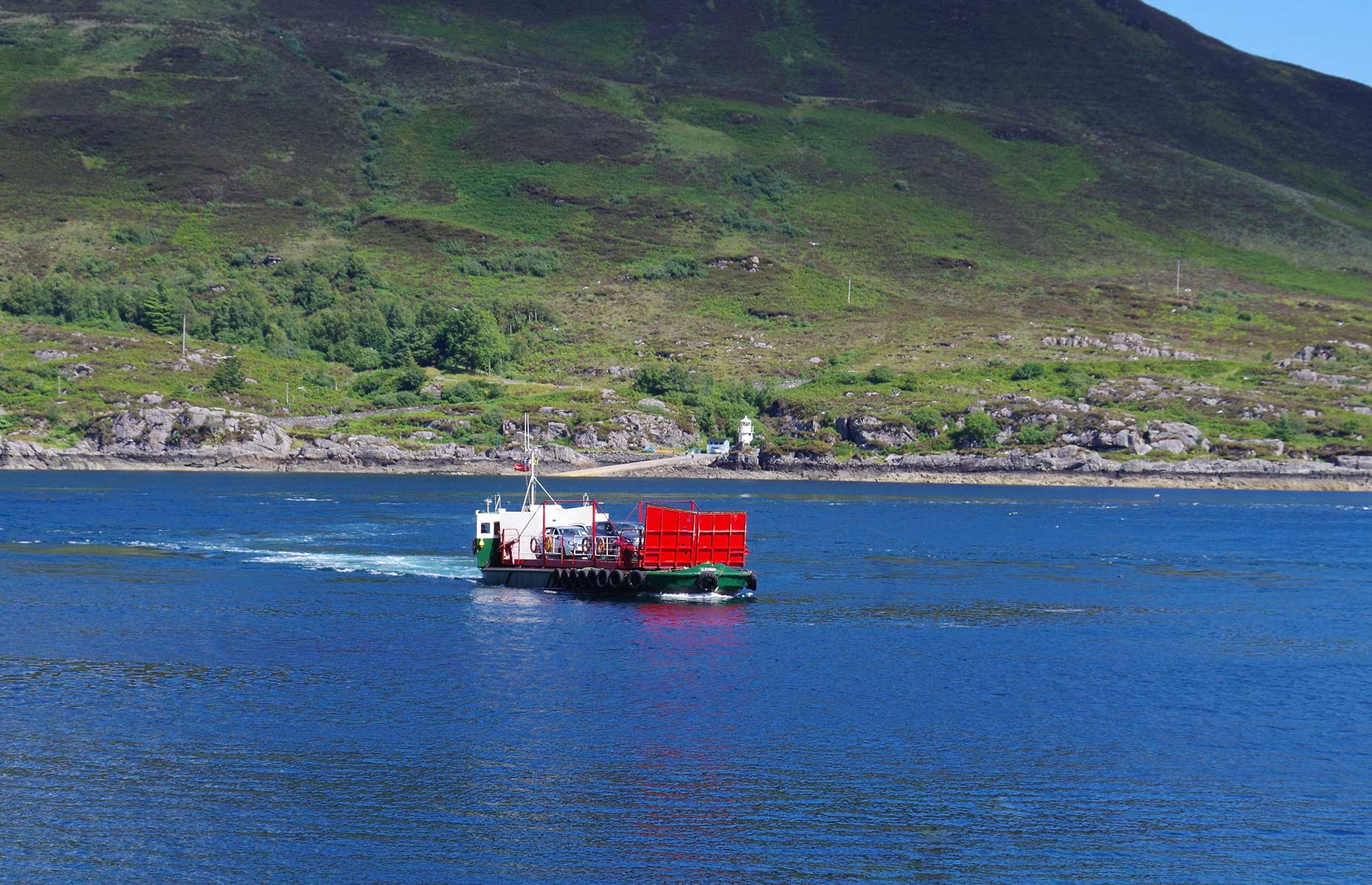 Jacqueline Hofmeijer/Shutterstock
Jacqueline Hofmeijer/Shutterstock
It’s only 1,968 feet (600m) across the Kylerhea straits – narrow enough that people used to swim their cattle across – and much of the crossing is taken up with the operator pushing the platform around and untying the ropes. It’s slower than the bridge, of course, but there’s no more memorable way to travel over the sea to Skye.
- Helen Ochyra is the author of Scotland Beyond the Bagpipes, out now (bookguild.co.uk, £9.99)
Comments
Be the first to comment
Do you want to comment on this article? You need to be signed in for this feature
